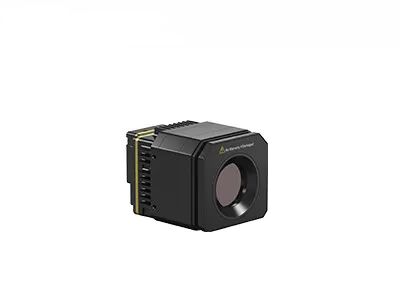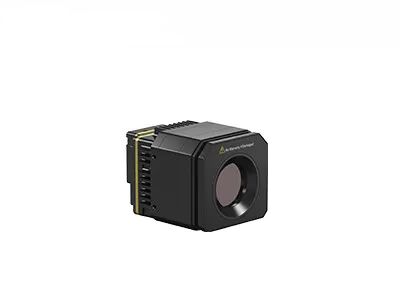-
Thermal Camera Core
-
Thermal Security Camera
-
Drone Thermal Camera
-
Plug-in Thermal Camera
-
Cooled Infrared Detectors
-
Cooled Camera Modules
-
Optical Gas Imaging
-
Infrared Thermal Camera Module
-
High Resolution Thermal Camera Module
-
Thermal Camera For Fever Detection
-
Vehicle Mounted Thermal Camera
-
Integrated Dewar Cooler Assembly
-
Uncooled Infrared Detectors
Thermal Camera for Fever Detection Uncooled LWIR Thermal Module 400x300/17μm

Contact me for free samples and coupons.
Whatsapp:0086 18588475571
Wechat: 0086 18588475571
Skype: sales10@aixton.com
If you have any concern, we provide 24-hour online help.
x| Resolution | 400x300/17μm | NETD | <50mK |
|---|---|---|---|
| Spectral Range | 8~14μm | Size | 44.5x42.5x58.9mm |
| Highlight | Uncooled LWIR Thermal Module 400x300,17uM LWIR Thermal Module,Fever Detection LWIR Thermal Camera |
||
Thermal Camera For Fever Detection, Uncooled LWIR Thermal Module 400x300/17μm
iHA417 fever screening thermal camera consists of 400×300 / 17μm infrared detector, 7mm infrared optical lens and a specialized SDK for human body temperature measurement.
It is a kind of infrared product for fever detection and fever screening that uses image analysis software to detect and mark the areas of an image where a defined temperature threshold has been exceeded.
If the software detects that this temperature threshold has been exceeded in a person’s thermal image, this indicates the probability that this person has an elevated body temperature.
- NETD<30mk, High Sensitivity
- Easy to Integrate
- Non-contact Design
- Field of View: 37.2°×28.3°
- Temperature Difference: ±0.5℃
- Temperature Measurement Distance: Optimal 5 Meters
| Model | iHA417 |
| IR Detector Performance | |
| Resolution | 400x300 |
| Pixel Pitch | 17μm |
| Spectral Range | 8~14μm |
| NETD | <30mK |
| Image Processing | |
| Frame Rate | 25Hz |
| Start-up Time | <10s |
| Extension Component | USB Video |
| Dimming Mode | Linear/Histogram/Mixed |
| Image Display | Black Hot/White Hot/Pseudo Color |
| Image Direction | Horizontally/Vertically/Diagonally Flip |
| Image Algorithm | NUC/AGC/IDE/DNR |
| Electrical Specification | |
| Standard External Interface | TYPE-C |
| Communication Mode | USB |
| Supply Voltage | 5±0.5V |
| Typical Power Consumption | <1.5W |
| Temperature Measurement | |
| Operating Temperature Range | 16°C ~ 32°C |
| Temperature Range | 20°C ~ 50°C |
| Temperature Accuracy | ≤±0.5°C (No Wind Indoors, 32°C~42°C Target) |
| SDK | ARM/Windows SDK, Full Screen Thermography |
| Physical Characteristics | |
| Dimension (mm) | 44.5x42.5x58.9 (PLUG417S+7mm Lens) |
| Weight | PLUG417S+7mm Lens≤135g |
| Environmental Adaptation | |
| Operation Temperature | -10°C ~ +50°C |
| Storage Temperature | -45°C ~ +85°C |
| Humidity | 5%~95%, Non-condensing |
| Vibration | Random Vibration 5.35grms, 3 Axis |
| Shock | Half-sine Wave, 40g/11ms, 3 Axis 6 Direction |
| Optics | |
| Optional Lens | Fixed Focus Athermal: 7mm |
| Certification | |
| Certification Standards | ROHS/REACH |
The iHA417 thermal camera is widely used in human body temperature measurement and elevated body temperature screening.
![]()
![]()
1. What is infrared radiation?
When talking about infrared thermal imaging, the first thing to think about is infrared radiation (IR). The wavelength of infrared radiation energy starts at about 700nm and extends to about 1mm. All objects emit a certain amount of heat in the form of infrared radiation, which is invisible to us, because in the entire electromagnetic spectrum, the naked eye can only see "visible light".
2. How does infrared thermal imager work?
The core component of the infrared equipment is the infrared thermal detector, which can sensitively detect the tiny temperature difference of the surrounding objects. Then, it collects this radiation information from the object and outputs the temperature information for imaging, which is based on the temperature difference information. The hotter the object, the more infrared radiation it produces. If the intensity is too high, you can feel it like heat.




